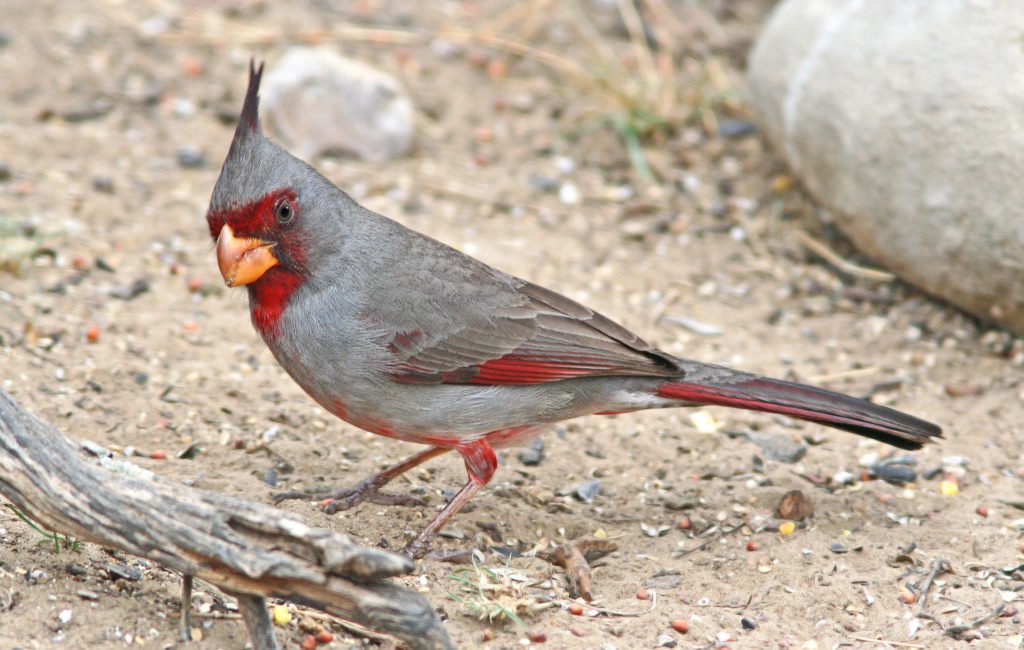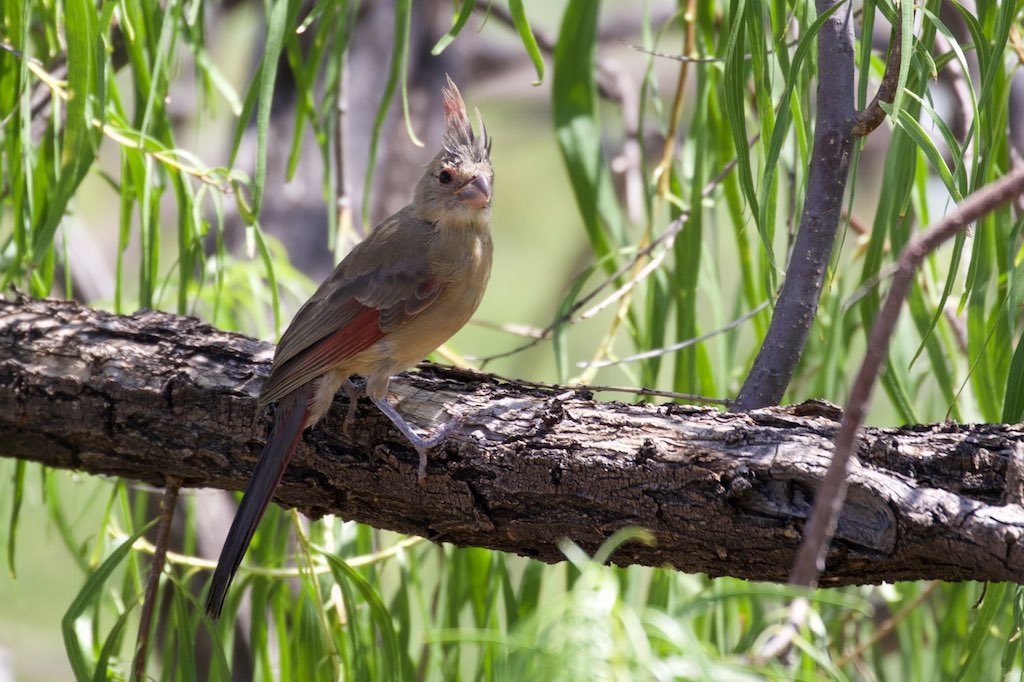In North America, the pyrrhuloxia, also known as desert cardinal (Cardinalis sinuatus), is a medium-sized songbird that can be found in the American southwest and northern Mexico. This distinctive species, which has a short, stout bill as well as a red crest and wings, is closely related to the Northern cardinal and the Vermilion cardinal, both of which are members of the same family Cardinalidae.
Quick Overview: Cardinalis Sinuatus – Pyrrhuloxia
Body size: Around 8.3 in (21 cm) in length and weighed about 24–43 g (0.8–1.5 oz)
Main colors: Gray, Red, Yellow
Range: Southwestern United States
Migratory Bird: No
Best time of the year to see in the U.S.: All year (January – December)
Conservation Status: Least Concern
Pyrrhuloxia Description
The pyrrhuloxia looks similar to the northern cardinal in appearance. In the male, gray is the dominant color, with a bright rosy red breast and belly, as well as bright red wings and tail, a red crest, and an equally bright red face.

The female has a similar appearance to the male, but she is a little paler and does not have the redbreasts and face. The pyrrhuloxia has a thick, yellow parrot-like bill that it uses to crack open seeds, which it gets its color from the sun.

Size
These birds are 8.3 in (21 cm) in length and weighed about 24–43 g (0.8–1.5 oz). Their wingspan could range up to 12 in (30 cm).
Feeding
Flower spikes, various fruits, berries, seeds, and insects are among the foods that they consume. In the summer, it preys on insects as well. It cracks open and crushes seeds with the help of its powerful bill.
Habitat
When looking for the pyrrhuloxia, look for it in thorny mesquite thickets, which are usually found along the dry desert stream and creek beds. It can also be found on the outskirts of the woodlands.
Behavior
They are not migrants, but they have been known to wander away from their homes. The birds may congregate in large groups of hundreds of birds to forage for food during the winter.
Cardinalis Sinuatus Scientific Classification
- Kingdom: Animalia
- Phylum: Arthropoda
- Subphylum: Chelicerata
- Class: Aves
- Order: Passeriformes
- Family: Cardinalidae
- Genus: Cardinalis
- Species: Cardinalis sinuatus
Subspecies
If therePyrrhuloxia has been divided into three subspecies, each of which has been named. One of the populations found in Texas and New Mexico is that of the east Mexican population, which has ties to the Chihuahuan Desert. The other two are found in western Mexico and Arizona, as well as Baja California Sur, respectively.
Best time of the year to see
In the United States, the best time of year to see these birds is all year round, regardless of the season. This refers to any month of the year from January to December.
Distribution of the pyrrhuloxia bird in the USA
Cardinalis sinuatus can be found in the southwestern United States and northern Mexico, among other places. In the United States, it can be found in Baja California, Arizona, New Mexico, Texas, southwestern Kansas, southern Colorado, and western Oklahoma.


